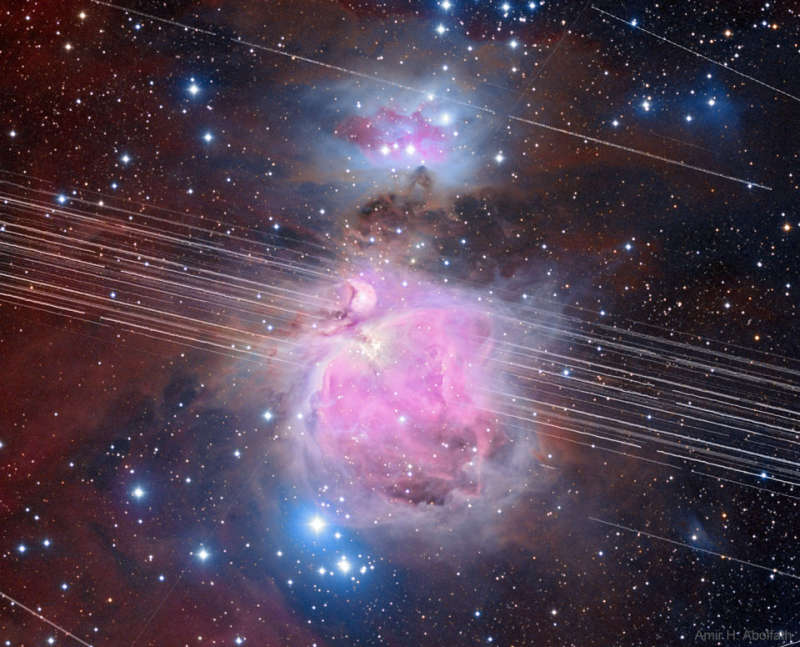Credit & Copyright: Amir H. Abolfath
Explanation:
What are those streaks across Orion?
Most are reflections of sunlight from numerous Earth-orbiting Starlink satellites.
Appearing by eye as a series of
successive points floating across
a twilight sky, the increasing number of
SpaceX Starlink communication satellites are
causing concern among many astronomers.
On the positive side,
Starlink and
similar constellations make the post-sunset sky more dynamic,
satellite-based global communications faster, and help provide
digital services to currently underserved rural areas.
On the negative side, though, these
low Earth-orbit satellites make
some deep astronomical imaging programs more difficult,
in particular observing programs that need images taken
just after sunset and just before dawn.
Planned future satellite arrays that function in higher orbits may
impact
investigations of the deep universe planned for
large ground-based telescopes at any time during the night.
The featured picture, taken in 2019 December, is a digital combination of over 65
3-minutes exposures, with some images taken to highlight the background
Orion Nebula, while others to feature the passing satellites.
SatCon2 Wokshop 12-16 July 2021:
Mitigating Satellite Constellations
1999 2000 2001 2002 2003 2004 2005 2006 2007 2008 2009 2010 2011 2012 2013 2014 2015 2016 2017 2018 2019 2020 2021 2022 2023 2024 2025 |
Yanvar' Fevral' Mart Aprel' Mai Iyun' Iyul' Avgust Sentyabr' Oktyabr' Noyabr' Dekabr' |
NASA Web Site Statements, Warnings, and Disclaimers
NASA Official: Jay Norris. Specific rights apply.
A service of: LHEA at NASA / GSFC
& Michigan Tech. U.
|
Publikacii s klyuchevymi slovami:
satellite - ISZ
Publikacii so slovami: satellite - ISZ | |
Sm. takzhe:
Vse publikacii na tu zhe temu >> | |
